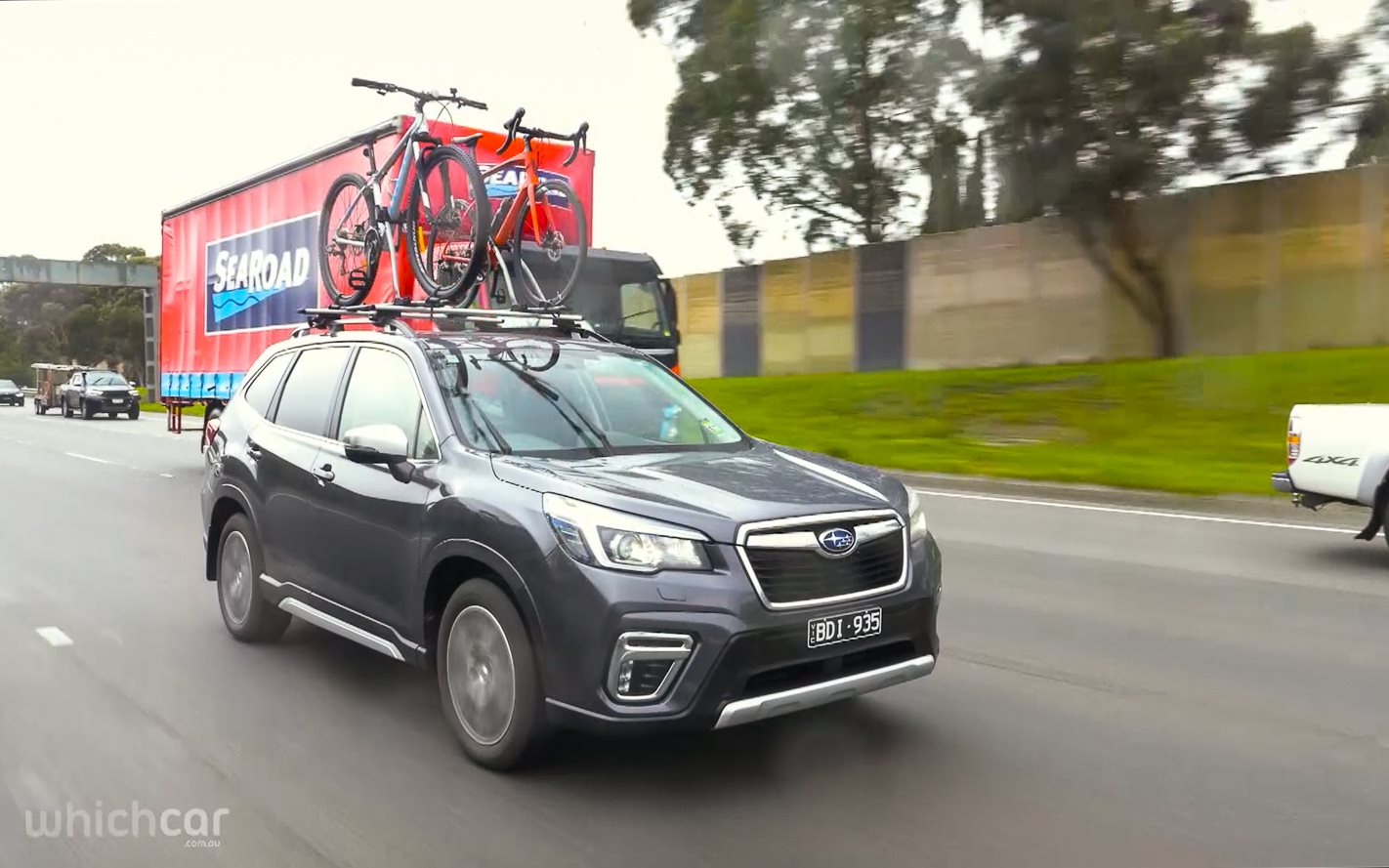
How often do you see people needlessly driving around with roof racks on their roof?
Sure, it might earn you some cool-points from some crowds but leaving a bike carrier, luggage pod or other cargo-toting device on top of your car can impact your fuel consumption – and by a significant factor too.
It’ s not something most would readily acknowledge, but even the sleekest bike carrier imparts drag. The laws of aerodynamics dictate that interrupting the flow of air over an object even by a small amount causes resistance and that resistance requires energy to overcome… and that energy comes from only one source: your fuel tank.
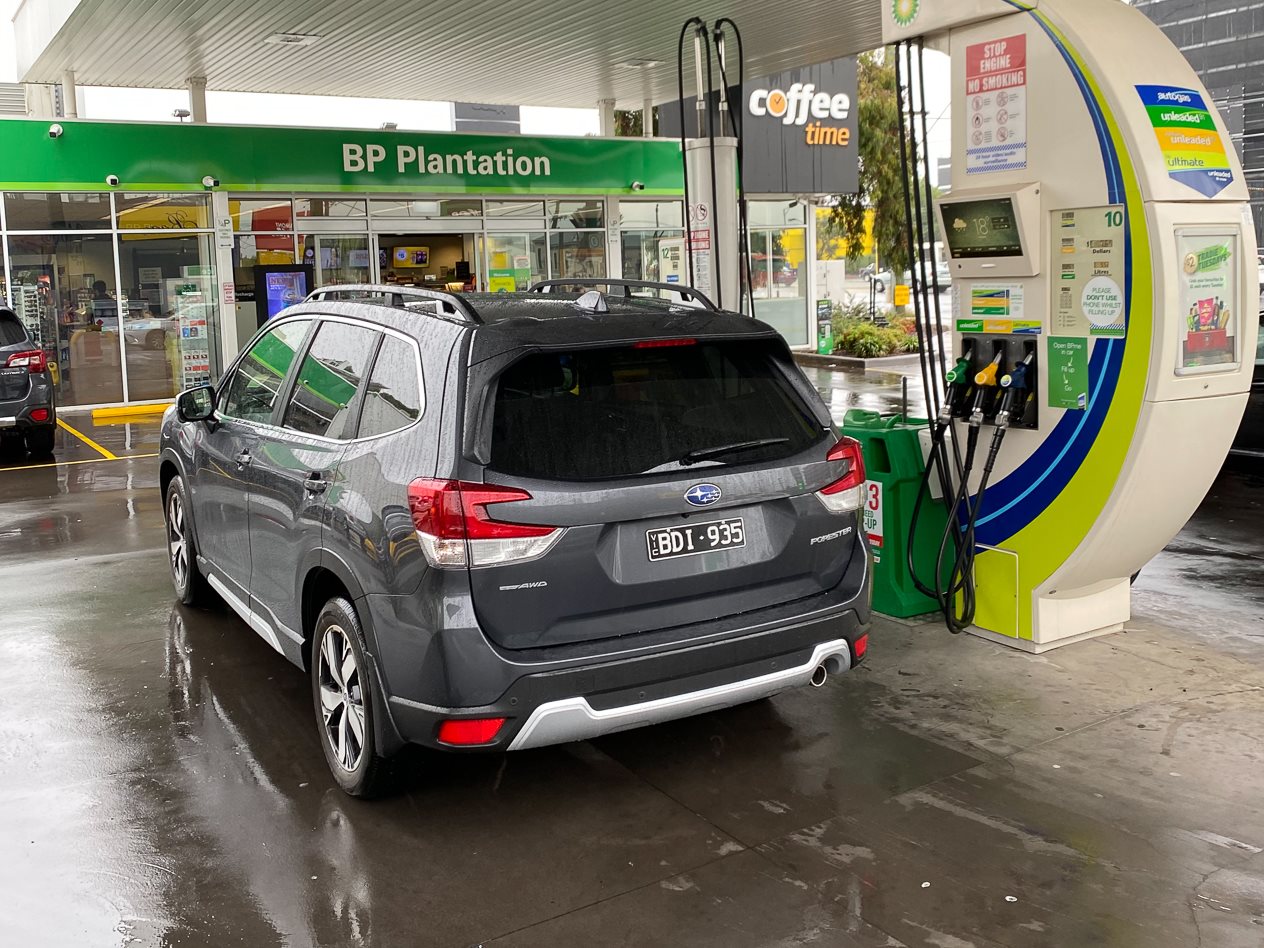
Car manufacturers spend millions of dollars designing their cars to be as aerodynamically slippery as possible, so the interruption of that carefully thought-out air flow seems to be undoing all that hard work. It also generates noise, but that’s not what we’re focusing on here.
We were curious and wondered how much of an effect on fuel consumption that leaving a bike carrier (and a couple of bikes) on top of a car could have, so WhichCar hit the road to examine the science in a methodical manner.
Our experiment aired on television during season 2 of WhichCar TV and involved three 100-kilometre road loops along Melbourne’s M1 freeway, completed at the same 100km/h average speed, coming back in between each run to the same pump at the same petrol station to get as accurate a representation of fuel consumption as possible. For an accurate result, the variables need to be minimised to just the factors we want to examine.
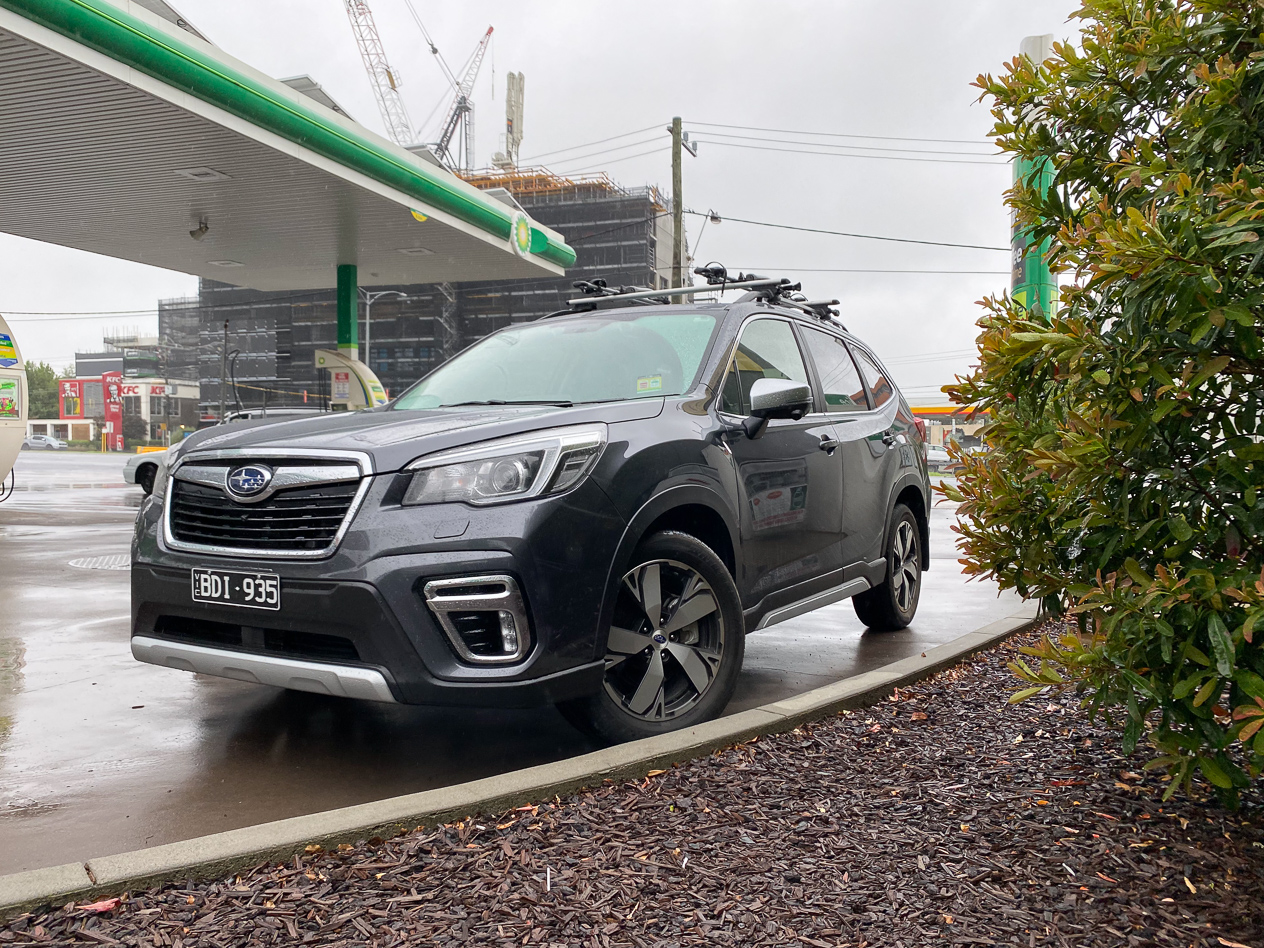
A control test was first completed with the roof of a petrol-powered, natural-aspirated Subaru Forester unburdened by any racks or cargo – only the factory-installed roof rails remained. That 100km run chewed up 6.46 litres of petrol, and was our baseline number.
Next we equipped a set of roof racks and a bike carrier attachment to the roof of the Forester, brimmed the tank once more and set off, completing the exact same run a second time. That second run returned a fuel consumption of 7.06L/100km – that’s 0.6 litres more than our control run. That’s not so good over a short 100 kilometre run, let alone a year. We’ll come back to that in a minute.
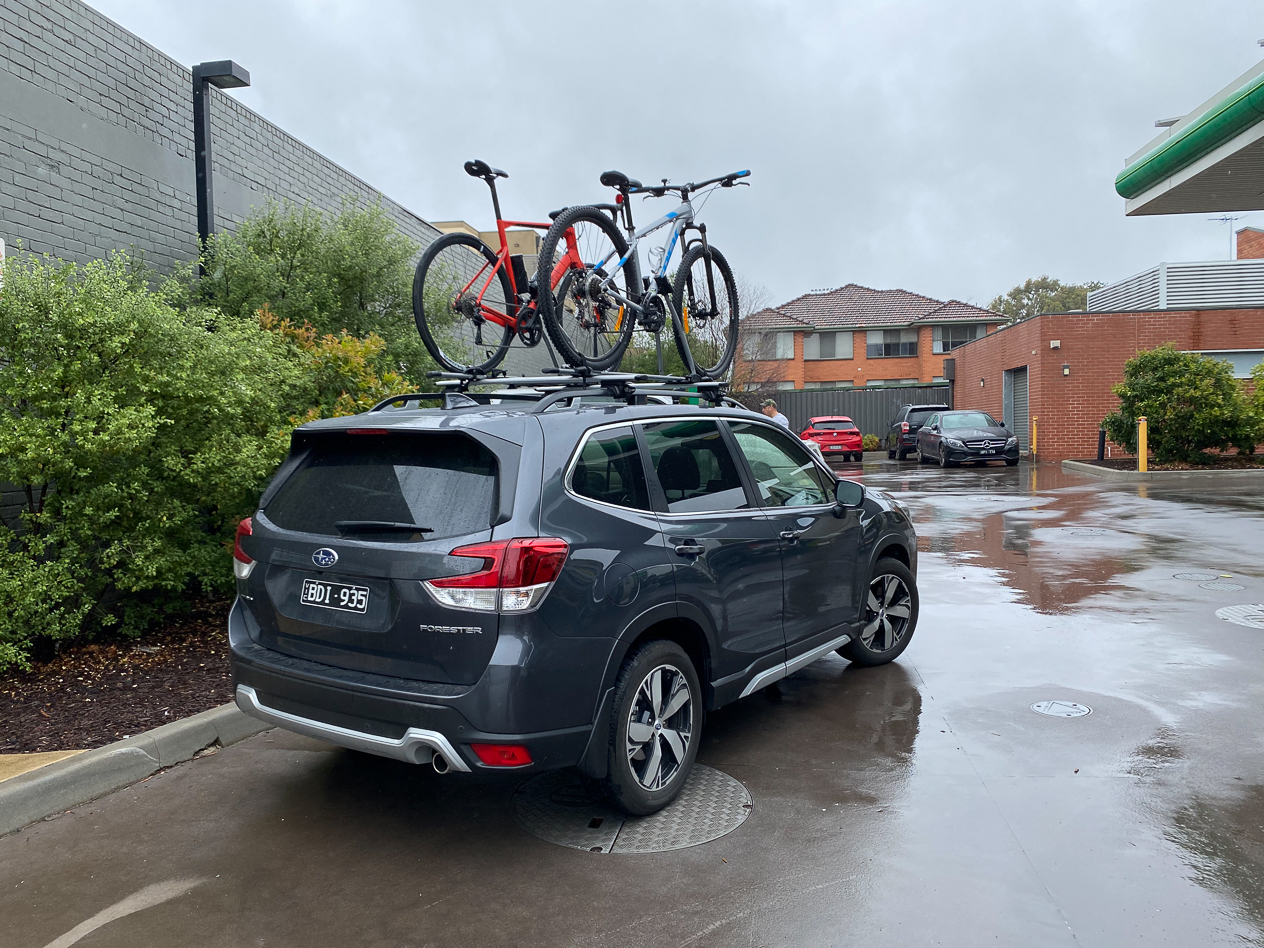
Finally, we two full-size road bikes to the roof to really create some drag on our final test run. That run used 7.84L/100km, or an extra 1.4 litres of fuel over the control.
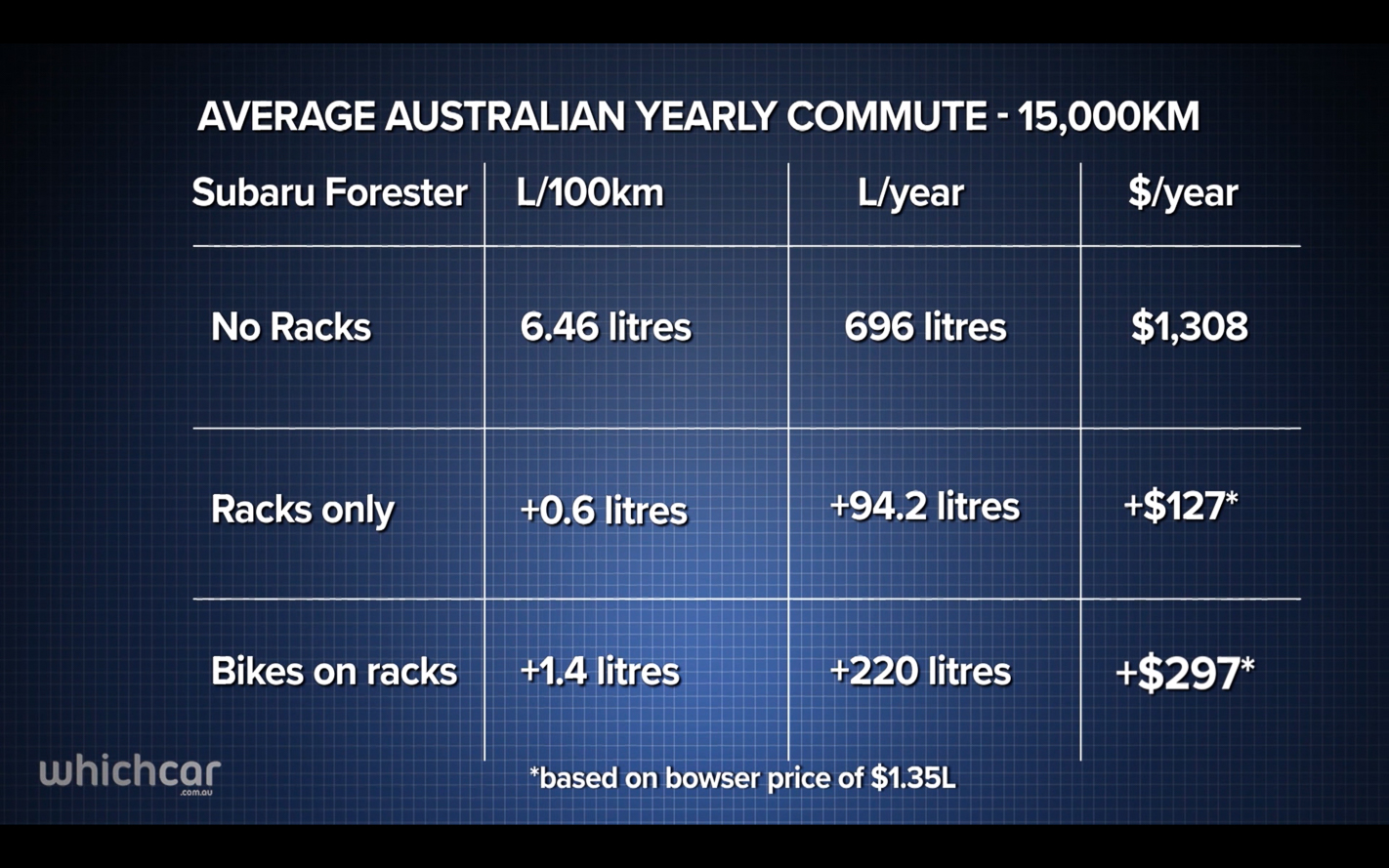
To put that in dollar terms, based on a bowser price of $1.35 per litre, the average Australian who drives 15,000km a year can expect to use an extra 94 litres of petrol over a year, and pay an extra $127 per year if they drive around with a bike carrier attached unnecessarily.
That shows that while it might be easier to leave them on between your biking adventures, it makes the most sense for your fuel economy – and your back pocket – to make sure your roof doesn’t have anything attached to it if you don’t need it.



